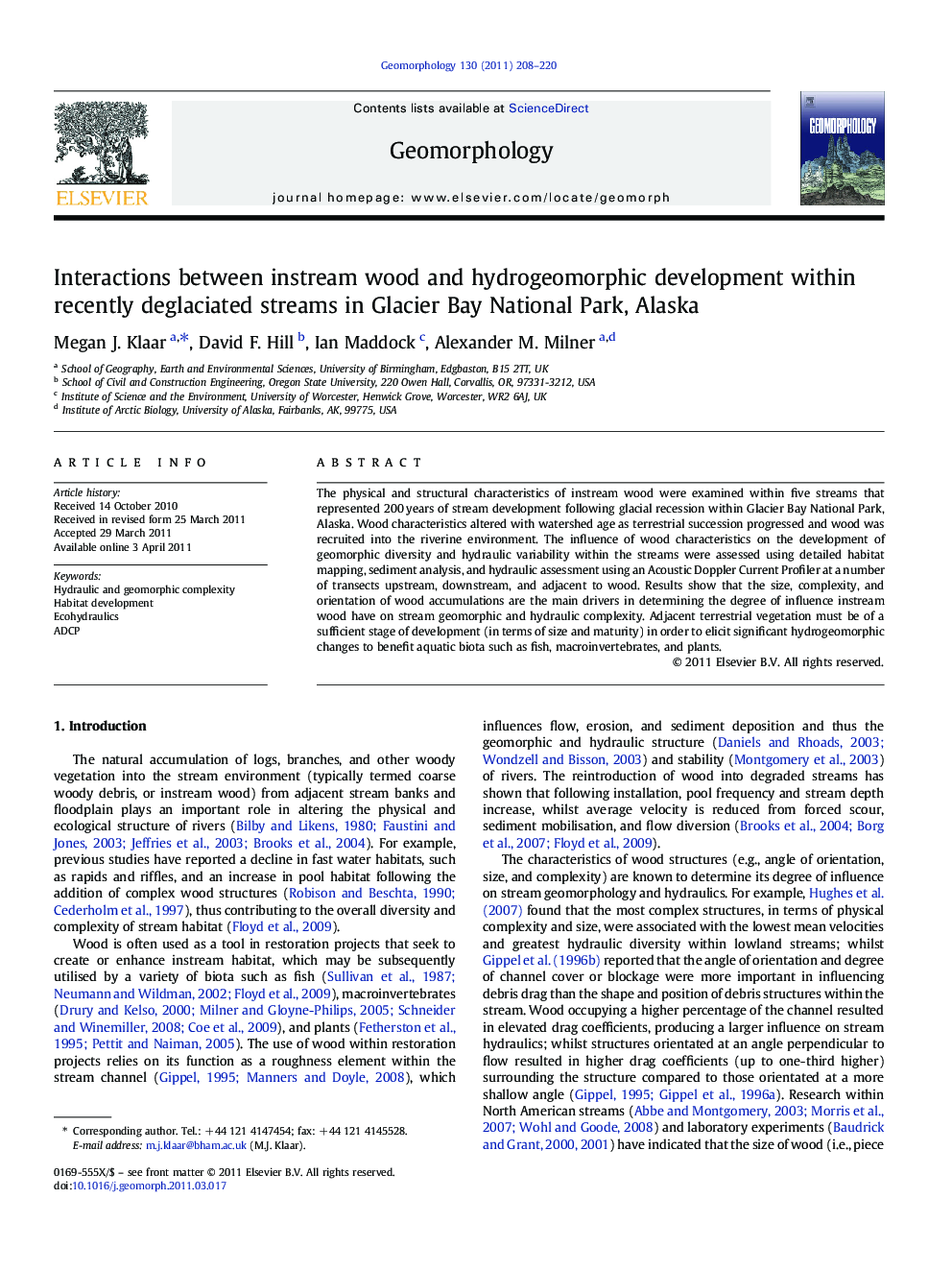| Article ID | Journal | Published Year | Pages | File Type |
|---|---|---|---|---|
| 6433002 | Geomorphology | 2011 | 13 Pages |
The physical and structural characteristics of instream wood were examined within five streams that represented 200Â years of stream development following glacial recession within Glacier Bay National Park, Alaska. Wood characteristics altered with watershed age as terrestrial succession progressed and wood was recruited into the riverine environment. The influence of wood characteristics on the development of geomorphic diversity and hydraulic variability within the streams were assessed using detailed habitat mapping, sediment analysis, and hydraulic assessment using an Acoustic Doppler Current Profiler at a number of transects upstream, downstream, and adjacent to wood. Results show that the size, complexity, and orientation of wood accumulations are the main drivers in determining the degree of influence instream wood have on stream geomorphic and hydraulic complexity. Adjacent terrestrial vegetation must be of a sufficient stage of development (in terms of size and maturity) in order to elicit significant hydrogeomorphic changes to benefit aquatic biota such as fish, macroinvertebrates, and plants.
⺠Physical and structural characteristics of instream wood within five streams were assessed. ⺠Wood characteristics altered with watershed age as terrestrial succession progressed. ⺠The size and complexity of wood were the main drivers in determining hydrogeomorphic complexity ⺠Floodplain vegetation must be of a sufficient stage of development to elicit these changes
